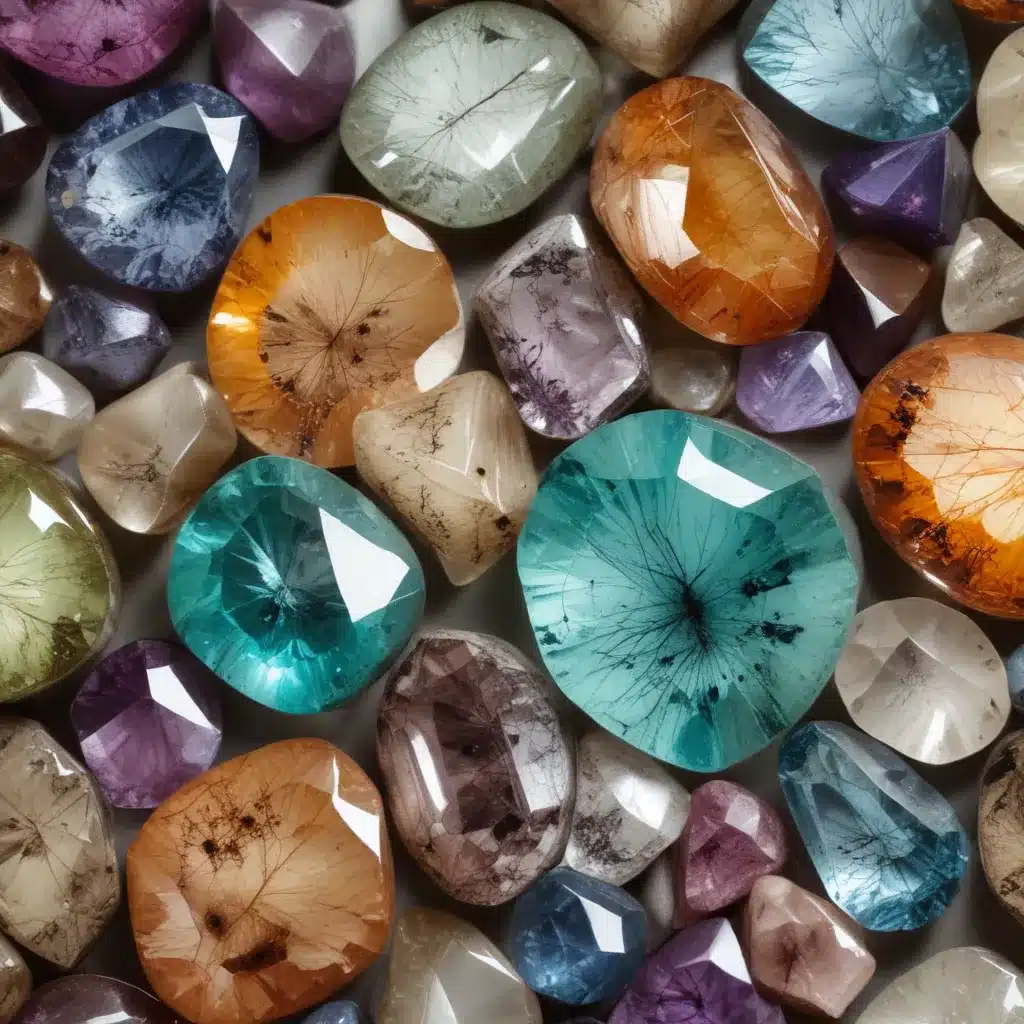
Gems are nature’s ultimate masterpieces, forged over millennia under immense heat and pressure deep within the Earth’s crust. But these sparkling wonders hold an even more fascinating story – one written not on the surface, but within their very structure. Gemstone inclusions, the tiny imperfections and materials trapped inside each crystal, are like hidden time capsules, revealing the dramatic journey of the gem’s formation.
The Crystalline Tapestry
Gemstones are fundamentally crystalline structures, their atoms arranged in a precise, repeating pattern. As these crystals grow, they may inadvertently encase other substances – minerals, liquids, or even gases – creating inclusions that become an integral part of the gem’s identity. These inclusions are not mere flaws, but rather windows into the gem’s past, offering clues about the conditions in which it was formed.
Imagine a growing tree, its branches trapping birds’ nests as it expands. Similarly, a developing gemstone can capture its environmental elements, forever preserving them within its crystalline lattice. These inclusions range from microscopic mineral specks to striking patterns, each one a unique fingerprint that distinguishes a gemstone and provides insights into its origin.
Inclusions Revealed
Gemologists employ a range of advanced tools to uncover the secrets held within gemstones. Optical microscopes allow them to closely examine the size, shape, and distribution of inclusions, while spectroscopic analysis can identify the specific materials trapped inside. Even X-ray diffraction techniques can be used to decipher the complex crystalline structures that form inclusions.
By studying these internal features, gemologists can determine whether a stone is natural or synthetic, identify its geographic source, and even gauge its overall quality and value. Inclusions are a gemstone’s DNA, offering a wealth of information to those who can interpret their language.
The Beauty of Imperfection
While inclusions were once seen as flaws, detracting from a gem’s value, modern gem enthusiasts have come to embrace them as unique attributes that add character and charm. Certain inclusions, such as the delicate “lily pad” discs in peridots or the mesmerizing “horsetail” fibers in demantoid garnets, are now prized for their visual appeal and rarity.
In some instances, inclusions can even enhance a gemstone’s optical properties, creating stunning effects like the asterism (star-like) patterns in rubies and sapphires, or the chatoyancy (cat’s eye) phenomenon in chrysoberyl. These natural phenomena are the result of precise alignment of mineral inclusions within the gem, transforming the ordinary into the extraordinary.
Gems of the Earth
Gemstone inclusions are not merely aesthetic curiosities; they are also scientific treasures, offering a window into the Earth’s geological history. Inclusions trapped within gemstones can contain ancient fluids, gases, and even remnants of long-extinct organisms, providing invaluable insights for researchers.
For example, amber – the fossilized tree resin – often contains inclusions of prehistoric insects, plants, and even small vertebrates, giving us a glimpse into the ecosystems of millions of years ago. Similarly, diamonds from the Earth’s deep mantle have revealed the presence of previously unknown minerals, challenging our understanding of the planet’s composition.
Guardians of Authenticity
In an age of synthetic and treated gemstones, inclusions have become crucial tools for gemologists to discern natural from artificial. Each gemstone variety has its own “signature” inclusions, formed by the unique conditions of its creation. By identifying these inclusions, experts can reliably distinguish between natural, treated, and laboratory-grown gems – a vital skill in maintaining the integrity of the gem and jewelry industry.
Moreover, the specific characteristics of inclusions can provide clues about the provenance of a gemstone, tracing its origins to a particular geographic region or mining site. This information not only satisfies the curiosity of collectors but also plays a crucial role in ensuring ethical and sustainable sourcing practices.
Caring for Inclusions
While inclusions add charm and character to gemstones, they can also impact a gem’s durability and require special consideration. Certain types of inclusions, such as fractures or cleavage planes, can weaken the stone’s structure and make it more susceptible to chipping or cracking. Jewelers must take great care when setting and mounting included gems, often opting for protective settings like bezels or halos to shield the stone from potential damage.
Similarly, the presence of inclusions may call for gentler cleaning and maintenance methods. Harsh chemicals or ultrasonic cleaners, for example, can damage or dislodge the delicate materials trapped within the gem. By understanding the specific needs of included stones, gem enthusiasts and jewelry owners can ensure the long-term preservation of these natural wonders.
Embracing the Unique
As we delve into the captivating world of gemstone inclusions, it becomes clear that these “imperfections” are not flaws to be hidden, but rather the very essence of a gem’s identity. Each inclusion is a testament to the incredible forces that shaped our planet, a record of the Earth’s geologic journey frozen in time.
By appreciating the unique character that inclusions bring to gemstones, we not only enhance our understanding of these natural treasures but also forge a deeper connection with the world around us. After all, it is often in the subtle, unexpected details that we find the most extraordinary beauty.
So the next time you gaze upon a gemstone, take a moment to peer beyond its dazzling exterior and uncover the hidden stories it holds within. For in these inclusions, we find a reflection of the Earth’s own remarkable history – a history that continues to captivate and inspire us, gemstone by gemstone.

